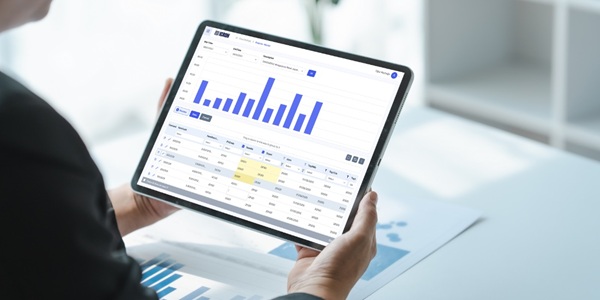
Procurement management is a critical aspect of supply chain planning. It is the art of finding the necessary resources to operate efficiently while controlling costs. From selecting suppliers to managing contracts and purchasing goods or services, procurement management covers various strategic processes. A well-executed procurement management system enhances supply chain efficiency, minimizes risks, and fosters long-term success.
Defining Procurement Management in Supply Chain Planning
Procurement management involves acquiring goods and services to meet an organization’s operational and strategic needs. It ensures that the right materials are sourced at the right time, in the correct quantities, and at the best possible cost. Within supply chain management, procurement management is pivotal for achieving cost optimization, maintaining supplier relationships, and ensuring the timely availability of resources.
Supply chain procurement management involves sourcing and purchasing the necessary goods and services for business operations. This process includes selecting suppliers, negotiating contracts, and managing supplier relationships to ensure timely delivery and quality compliance. Effective procurement aligns with organizational goals, directly impacting profitability and operational efficiency.
Key Components of Procurement Management
Supplier Selection - Selecting the Right Suppliers for Procurement Success
Choosing reliable suppliers is a fundamental step in building an effective procurement management system. This involves evaluating supplier capabilities, quality standards, and delivery performance.
Contract Negotiation - Negotiating Contracts for Better Supplier Partnerships
Effective contract negotiation ensures favorable terms, such as cost, delivery schedules, and quality standards, fostering mutually beneficial partnerships.
Purchasing Processes - Streamlining Purchasing Processes for Efficiency
A streamlined purchasing process integrates technology to automate tasks, track orders, and enhance overall procurement efficiency.
The Role of Procurement Management in Supply Chain Planning
- Enhancing Supply Chain Efficiency: An efficient procurement management process optimizes operations by minimizing delays and reducing excess inventory. It directly impacts cost savings by avoiding overordering and ensuring the timely availability of goods.
- Risk Mitigation in Procurement: It is critical to identify risks, such as supplier reliability issues or price fluctuations, proactively. Strategies like diversifying suppliers or leveraging risk and procurement management tools help mitigate potential disruptions.
- Optimizing Purchase Plans: Developing optimal purchase plans involves evaluating supply chain procurement risks and considering real-life supply disruptions. By integrating these factors, businesses can make informed decisions that align with stock policies and ensure timely material acquisition.
- Cost Management: Strategic procurement practices, such as competitive sourcing and contract negotiations, can lead to significant cost savings and enhance profit margins.
- Quality Assurance: By selecting reputable suppliers and establishing quality standards, procurement ensures that the materials and services acquired meet the necessary specifications, contributing to the overall quality of the final product.
Procurement Management Processes
Strategic Sourcing - Using Strategic Sourcing for Long-Term Value
Strategic sourcing involves analyzing organizational needs and identifying suppliers who can provide the best value. This approach reduces costs and aligns procurement with long-term business objectives.
Supplier Relationship Management
Building strong supplier relationships fosters trust and collaboration. Open communication and regular performance evaluations ensure that suppliers consistently meet expectations. Proactive and timely procurement fosters strong supplier relationships, leading to improved terms, faster deliveries, and enhanced collaboration.
Procurement Planning
Effective procurement planning anticipates future requirements, aligns procurement activities with business goals, and ensures timely resource availability. Managing procurement constraints and purchasing parameters enhances resilience to market changes and demand fluctuations.
Key Strategies for Successful Procurement
To enhance procurement effectiveness, organizations can implement the following strategies:
Develop a Comprehensive Procurement Plan
A well-structured procurement plan outlines the organization’s purchasing needs, timelines, and budget constraints. It serves as a roadmap for acquiring necessary goods and services efficiently.
Leverage Technology - Utilizing Technology to Streamline Procurement
Utilizing digital procurement platforms can streamline processes, improve data accuracy, and provide valuable insights for decision-making. Automation tools can handle routine tasks, allowing procurement professionals to focus on strategic activities.
Engage in Strategic Sourcing
This involves analyzing the organization’s spending patterns and supplier market to identify the best sourcing opportunities. Strategic sourcing aims to align procurement activities with business goals, ensuring value addition beyond mere cost savings.
Implement Supplier Performance Management
Regularly assessing supplier performance helps in maintaining quality standards and fostering continuous improvement. Key performance indicators (KPIs) can be established to monitor aspects such as delivery timeliness, quality compliance, and responsiveness.
Focus on Sustainability - Integrating Sustainability into Procurement Decisions
Incorporating environmental and ethical considerations into procurement decisions supports corporate social responsibility and meets the growing consumer demand for sustainable practices. This can involve selecting suppliers who adhere to sustainable practices and reducing the supply chain’s carbon footprint.
The Importance of Procurement Planning
Effective procurement planning is vital for several reasons:
- Cost Reduction: Planning allows organizations to identify cost-effective purchasing methods and negotiate better terms with suppliers, leading to significant savings.
- Demand Forecasting: Accurate procurement planning involves predicting future demand to ensure that sufficient resources are available without overstocking, thus optimizing inventory levels.
- Operational Efficiency: A well-devised procurement plan ensures that materials and services are available when needed, preventing production and service delivery delays.
Steps in the Procurement Process
The procurement process typically involves the following steps:
-
Identifying Needs: Determining what goods or services the organization requires.
-
Sourcing Suppliers: Researching and selecting potential suppliers to fulfill the identified needs.
-
Negotiating Contracts: Discussing terms and conditions with selected suppliers to establish favorable agreements to both parties.
-
Purchase Order Creation: Issuing official orders for the required goods or services.
-
Receiving and Inspection: Accepting the delivered goods or services and ensuring they meet the specified requirements.
-
Payment Processing: Completing the financial transaction as per the agreed terms.
-
Record Keeping: Maintaining detailed records of all procurement activities for future reference and compliance purposes.
Challenges in Procurement Management
Navigating Supply Chain Disruptions - Overcoming Supply Chain Disruptions in Procurement
Supply chain disruptions, such as natural disasters or geopolitical issues, can significantly impact procurement. Businesses must develop contingency plans to address such uncertainties. Effectively managing supply chain disruptions ensures efficiency, even amidst unexpected challenges.
Ensuring Compliance and Sustainability
Procurement teams must navigate complex regulatory landscapes while adopting sustainable practices, including environmental, social, and governance (ESG) standards.
Aligning Finances with Procurement
Integrating budget considerations with procurement strategies ensures purchasing decisions align with financial goals, preventing overspending or material shortages. This alignment is crucial for maintaining financial health while meeting procurement objectives.
Best Practices for Effective Procurement Management
Leveraging Technology in Procurement
Modern procurement management software offers real-time tracking, automated workflows, and data analytics, enabling better decision-making.
Continuous Improvement and Training
Regular training for procurement teams ensures they stay updated on the latest tools and techniques, fostering a culture of continuous improvement.
Mastering Contract Lifecycle
Efficiently handling contract lifecycles—from initiation to expiration—empowers procurement teams to take timely actions, such as renewals or renegotiations. Proactive alerts and management of contract timelines contribute to sustained supplier relationships and procurement efficiency.
Future Trends in Procurement Management
-
Digital Transformation in Procurement - AI and machine learning revolutionize procurement management processes. AI-driven predictive analytics optimize sourcing decisions while enhancing transparency and traceability.
-
Sustainable Procurement Practices - As businesses prioritize sustainability, procurement strategies increasingly incorporate eco-friendly practices, such as reducing waste and sourcing from ethical suppliers.
The importance of procurement management in supply chain planning cannot be overstated. From enhancing efficiency to mitigating risks and embracing future trends, a robust procurement strategy is essential for any business striving for operational excellence. Organizations can navigate challenges and capitalize on opportunities in the ever-evolving global marketplace by leveraging modern tools, fostering strong supplier relationships, and prioritizing sustainability.













